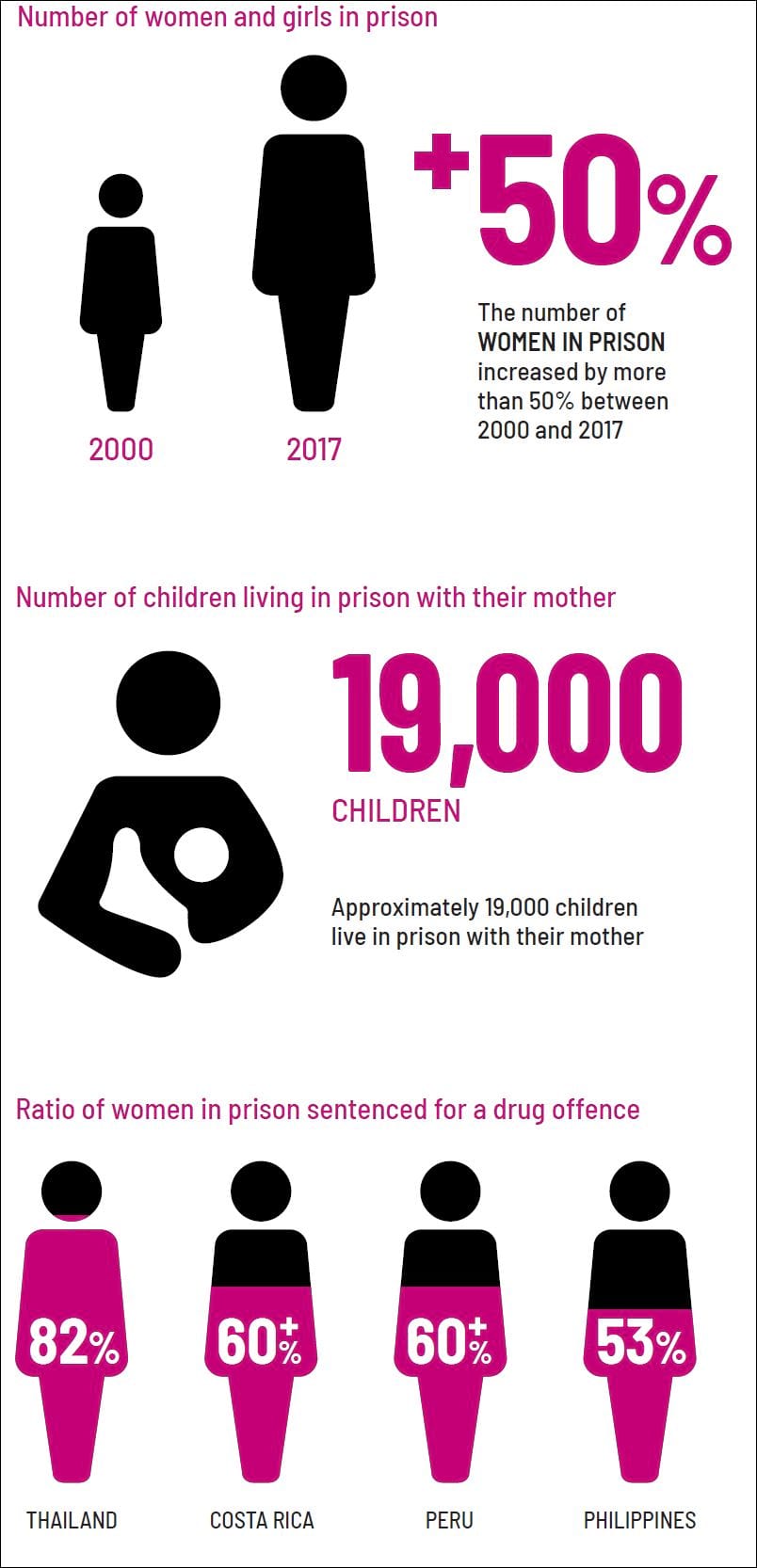Big increase in the incarceration of women
The number of women and girls in prison globally increased by more than 50% since the start of the century. Overincarceration of women due to drug-related offences is not the result of an increase of criminal activities. Harsh drug policies affect women because such policies are blind to the factors behind women’s involvement in drug crime, such as poverty, vulnerability to violence and coercion.
Linklaters LLP has published a multi-jurisdictional study for Penal Reform International in conjunction with the International Drug Policy Consortium, analysing the sentencing of women convicted of drug-related offences.
There have been dramatic increases in the number of women in prison, particularly in the Americas and Asia. Research suggests this is a result of political choices, including harsh drug policies that disproportionately impact women. Although international standards and commitments by global leaders highlight the need for action, including gender-sensitive sentencing the trend has not yet reversed. Factors behind women’s involvement in drug crime frequently range from poverty and vulnerability to violence and coercion. As women’s typical primary role in drug trafficking is that of a drug courier – or ‘mule’ – this makes them easier targets for drug enforcement authorities. As such, drug policies are known to have a particular and disproportionate impact on women, also impacting their vulnerable children.
To shed light on the issue, the report considers drug legislation, sentencing guidelines and sentences imposed on women for drug-related offences across criminal justice systems in 18 jurisdictions. The report covers Argentina, Australia, Colombia, Costa Rica, Ecuador, England and Wales, France, Germany, Hong Kong, Japan, Mexico, New Zealand, the Philippines, Poland, Portugal, Russia, Spain, and the United States. Many countries surveyed fail to take account of, or consider, the typical circumstances and roles of women’s involvement with drugs. The findings show that many of the jurisdictions are not in line with international standards which promote the use of non-custodial alternatives to imprisonment.
The aim of this analysis is to support Penal Reform International’s advocacy efforts to reduce the unnecessary imprisonment of women for drug-related offences and to understand the scope for more proportionate sentencing.
The UK situation
The issue of how female drug offenders are treated by the criminal justice system and the need to reduce the numbers of women sent to prison has been a topic of much discussion in the UK. It was recognised that, despite being a minority in all aspects of the drug trade, women tend to be most involved in the lower levels of the drug trade, where the greatest concentration of
arrests occur.
These concerns partially led to the review of the Sentencing Council’s Drug Offences Definitive Guideline the “Guideline”) in 2012 after an extensive consultation with professionals and the public. This Guideline requires the courts to consider the role the offender played in the drug operation when setting the provisional sentence range and then they should consider further aggravating and mitigating factors to
adjust the sentence within the range. These mitigating factors include elements that are particularly relevant to female offenders when deciding the final sentence.
While there is still an emphasis on imprisonment for drug offenders, for relatively long periods of time, and particularly in relation to trafficking, only a minority of women convicted of drug‑related offences are
imprisoned and the numbers are reducing. There is a large amount of UK academic and judicial discourse about the sentencing of women convicted of drug‑related offences, which has generally recognised the reduction in sentences over the last decade, partly as a result of courts being able to consider gender-related factors in their sentencing, while also considering that problems still remain, particularly in relation to foreign national women.
Thanks to Andy Aitchison for kind permission to use the header image in this post. You can see Andy’s work here.









